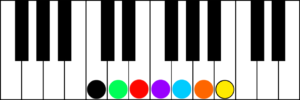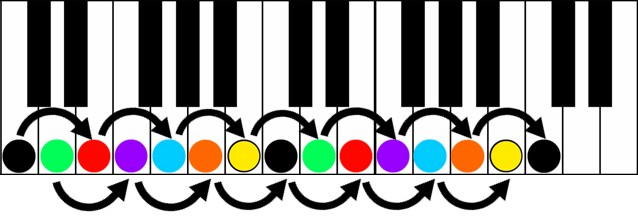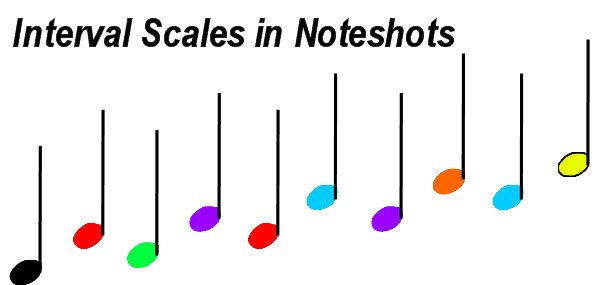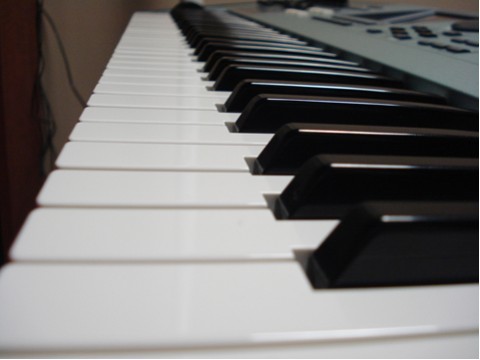If you’re like myself and much of the piano learning world, you’re probably familiar with the endeavor of practicing scales on your piano. But before I go any further, I’ll have to tell you that I hate that word! “Practice!” And just as much as that word, I hate the word “scale”. I’d rather refer to them as “a key of music”.
Someone once suggested that I was just arguing semantics. They’re probably right, but there’s something to be said for not using words that conjure up a negative image. For the sake of this article, I’ll use the term scale and try not to cringe when I do it.
But enough about that. Let’s talk about a way to study your keys of music (yes, scales) that’s fun and very much unlike the routine that most piano students go through. I’m talking about studying interval scales. You could also call them intervalic scales. Please don’t tune out on me. I’m just talking about playing the notes in the scales that you study, with intervals instead of in the diatonic pattern that we all learn them in.
Let’s take the key of C Major as an example…
As you know, the key of C Major consists of these 7 different notes.
 If you’re familiar with lead sheets, you’ll recognize the key of C in this format as well. (just a single note melody line) I placed a C above the staff to be consistent with the colorful format of Color Score. It’s the most common practice to play each one of them consecutively up and down the scale.
If you’re familiar with lead sheets, you’ll recognize the key of C in this format as well. (just a single note melody line) I placed a C above the staff to be consistent with the colorful format of Color Score. It’s the most common practice to play each one of them consecutively up and down the scale.
Here’s the key of C Major

Here’s the key of F Major

But try this.
Start out on the first note in the scale. Skip a note and play the next one. Then play the second note and repeat the process all the way the way up the scale. It’s quite easy in the key of C Major because it’s every other white note. 
What you’re actually doing is playing the scale in third intervals.
Intervals are a very simple concept. The definition of an interval is the distance between two notes. In fact, for every two notes that you have in a chord or a scale, you have an interval. As I just mentioned, these are third intervals. The easiest way to identify and play third intervals is to play every other note in the scale.
It’s very important to be familiar with the key you’re studying interval thirds in. Even though black keys can make maneuvering your way through a key more difficult, just remember to skip every other black note that’s in the key. This means you should be familiar with whatever key you’re executing interval thirds in.

The Key of C Major is the simplest key to identify thirds in because it has no no black keys. You simply skip every other note which happens to be on a white key.
The key of F Major is almost as simple because it only has one black key to skip.

The key of G Major also only has one black key.

An example of a more complex key to study interval thirds in would be the key of E Major because it almost has an equal number of black and white keys.
The key of E Major

It’s easier for me to show this concept with the Keyshots that I’ve covered so far, but not so easy in other keys. I’m using the arrows just to illustrate this concept. But they start getting jumbled up and confusing when there are black keys involved. So let’s look at the Interval Scales concept in a simple lead sheet format.
Here’s the key of C Major in interval scales.

Here’s the key of F Major in interval scales.

Here’s the key of F Major in interval scales.

Not only does this help you recognize the sound of third intervals, it can actually sound quite musical.
You can study scales this way in any key or with any type of scale for that matter.
Now try it in the Key of B flat Major.
As you can see, it’s more challenging with mixtures of white and black keys, but it’s an excellent exercise for your musical brain.
Let’s take a look at studying interval thirds in the Noteshot format.

This illustration represents all 12 Major keys. You just need to be familiar with Noteshots and how they represent the number system in color. You can get the instructional guide to this article for free. It has illustrations on how to study interval thirds in all 12 Major keys! Find out more about Color Score and how you can learn how to sound like a professional at your piano or keyboard.
Greg Lee
Latest posts by Greg Lee (see all)
- What is a minor/Major 7 Chord? - October 26, 2023
- 7 Chord Substitutions that Professionals Use - October 19, 2023
- 5 Simple Chord Tricks to Sound Amazing - October 5, 2023





